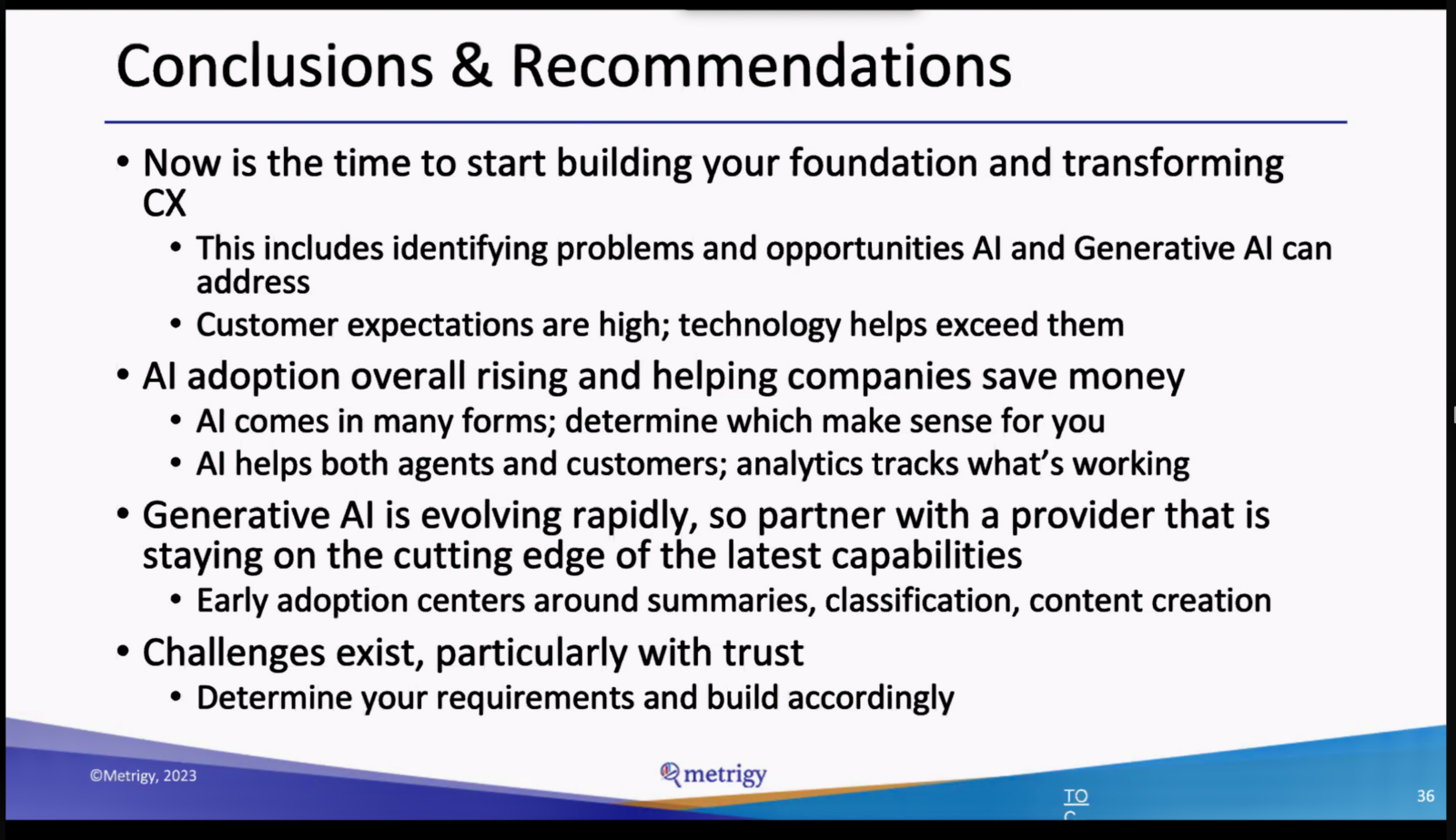Are you using generative artificial intelligence (AI) tools to identify when a customer is at risk of leaving your business? How about providing automated translation services, improving self-service options or preparing call summaries for customers as well as managers? These are just a few of the ways leading-edge organizations are using generative AI tools like ChatGPT to improve the customer experience (CX) and potentially drive down costs.
“Generative AI is really the catalyst this year for new CX investments,” said Baker Johnson, chief marketing officer, UJET, at a recent BrightTalk webinar, “Building the Foundation for a Generative CX Future.” He added that AI projects are playing an increasing role in the digital evolution of contact centers.
In the webinar, Robin Gareiss, CEO and principal analyst, Metrigy, outlined her firm’s recent AI research involving IT leaders and consumers. “AI adoption is rising, and helping companies improve agent productivity, boost CX and save money,” she said. “Right now, many organizations are kicking the tires, but there is plenty a lot of potential for the future.”
Top applications
Gareiss said ChatGPT has a number of applications in the contact center, beginning with content creation. “You can use these models to start a proposal or a new script,” she said. “It won’t be good to go, but it can save you time in the writing process.”
Agent assist applications, including screen pops, contextual information and suggested next steps, can also deliver rapid benefits, such significant reducing in an agent’s average handling time (AHT). Automating call summaries can give agents more time to spend with customers, added Baker.
Predictive intelligence is another area in which ChatGPT tools can help. “If consumers have three bad experiences, they’re out,” said Gareiss. “AI can identify when a customers is at risk of leaving so you can try to work with them and save the relationship.”
Addressing challenges
When making GAI investments, organizations need to address agent fears about losing their jobs, said Gareiss. “Contact centers are still growing, so we would expect to see job shifting, rather than agent replacement,” she said. “Also, agents may be more satisfied with their jobs, increasing longevity at their companies. There may also be other cost HR savings since organizations not using GAI are expected to hire more than twice as many new agents as those using AI.”
On the consumer side, trust is one of the challenges of GAI applications. How much do customers trust AI tools, like virtual agents and chatbots. Gareiss said the survey shows a split around age 45, as Millennials and Gen Zers are more trusting of AI than older generations. Gen Xers and Boomers are also more likely to prefer phone, email and in person contacts, while younger adults tend to use text, screensharing, chat and other digital interactions.
However, trust in the contact center could grow as consumers become more comfortable with using ChatGPT or Google’s Bard themselves. This is one area of technology, where consumers are lagging businesses, added Gareiss.
Looking ahead, Gareiss said, “Now is the time to start building your foundation. Identify problems and opportunities that GAI can address, including your work flows. Then, talk with your technology partners and see how these investments can pay off in delivering a better customer experience.”

